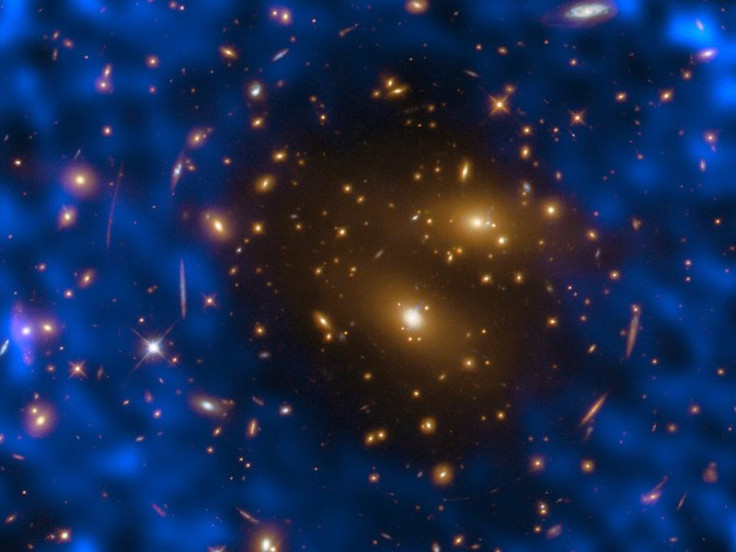Astronomers Spot A Dark Radio 'Hole' Around A Distant Galaxy Cluster

A team of astronomers has used the Atacama Large Millimeter/submillimeter Array (ALMA) in Chile to investigate the distribution and temperature of gas around a massive galaxy cluster located 4.8 billion light-years from Earth. The observations, which scientists believe are key to understanding the nature and evolution of galaxy clusters, are the first time ALMA has been used to image and measure what’s known as the Sunyaev-Zel’dovich (SZ) effect.
“The new ALMA observation not only confirms the previous observations, but also provides an image with the highest resolution and highest sensitivity, which will open up a new era of SZ science,” Eiichiro Komatsu from the Max Planck Institute for Astrophysics in Germany, who was part of the team that made the observations, said in a statement released Friday. “The mismatch between radio and X-ray observations leads us to the conclusion that this cluster is undergoing a violent merger, and we think that there is a clump of gas which is incredibly hot.”
The Cosmic Microwave Background — the radiation created shortly after the Big Bang — is one of the few windows that allow us to see what the cosmos we live in is actually like. Analysis of the omnipresent CMB has not only given us incontrovertible evidence for the Big Bang and the universe’s expansion, it has also provided us vital insights into the composition of the observable universe as a whole.
However, approximately 30 years ago, scientists observed that when CMB radio waves pass through the hot gas in a galaxy cluster, its high-energy electrons disturb the CMB’s constituent photons. These electrons give the photons a tiny boost of energy, and, as a result, the radiation is shifted from radio waves to higher energy.
This phenomenon is called the Sunyaev-Zel’dovich effect (named after the astrophysicists Rashid Sunyaev and Yakov Zel'dovich).
In the ALMA image of RX J1347.5-1145, which is one of the largest galaxy clusters in the observable universe, the SZ effect leads to the creation of a dark “hole” — a region that scatters CMB radio waves. The remaining region, where the CMB radiation is not scattered by the hot gas, appears blue.
© Copyright IBTimes 2024. All rights reserved.






















